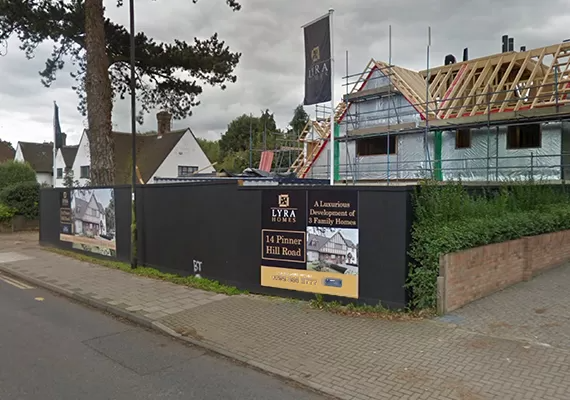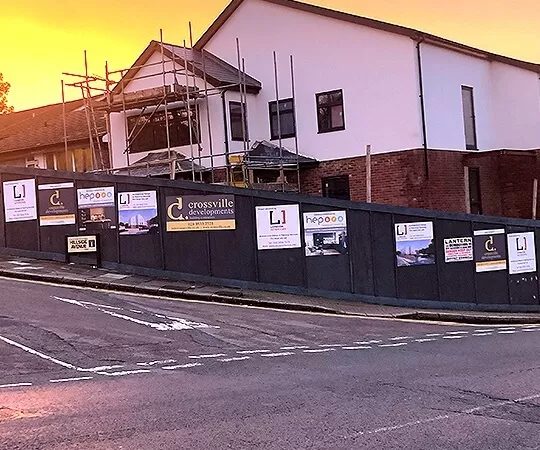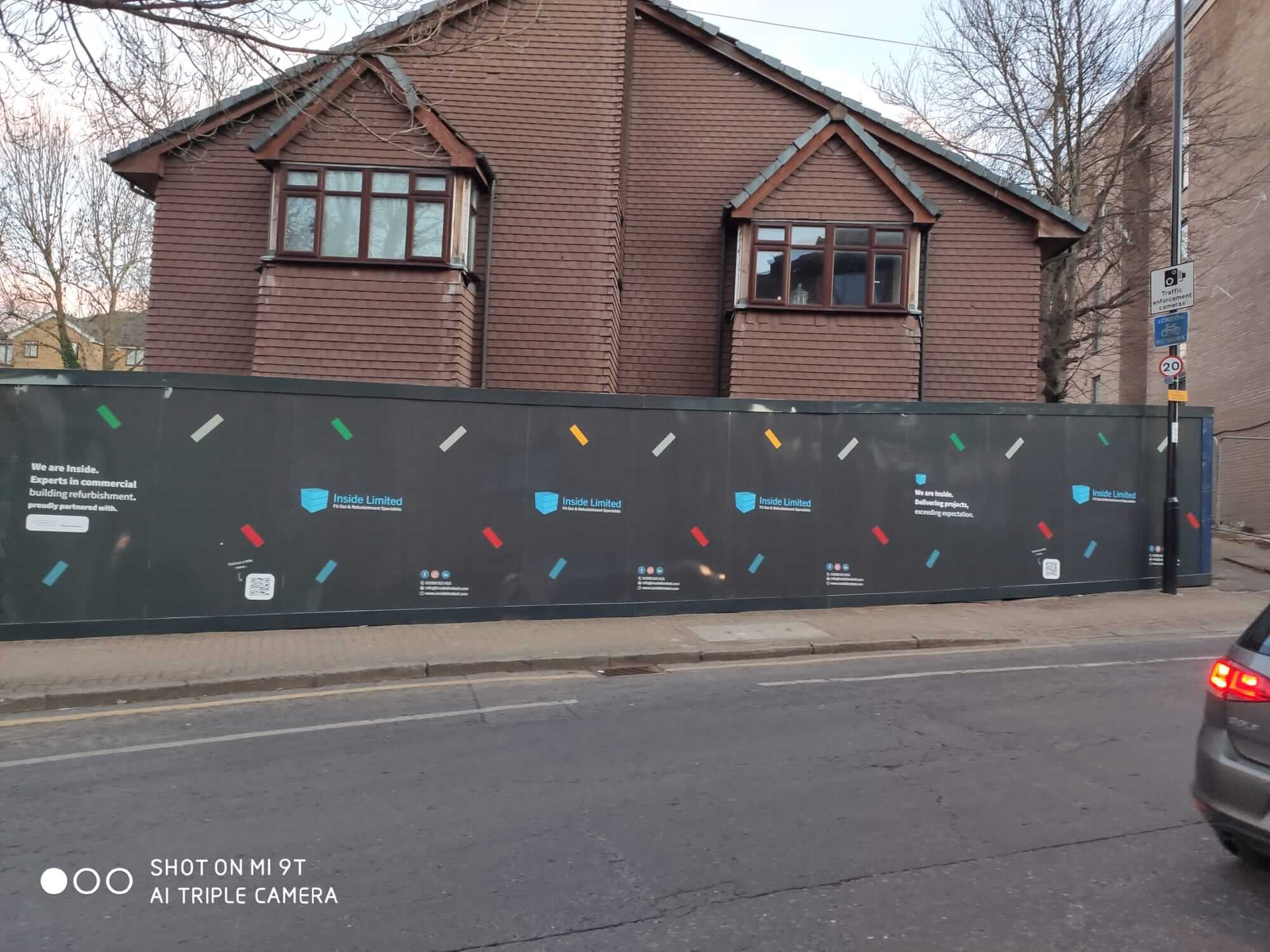The construction sector, every investment made is carefully considered for its return, and hoarding display boards are no exception. These temporary structures are often viewed only as safety barriers or compliance requirements, but in reality, they deliver much more value. Beyond their practical role, hoardings act as visual tools for branding, community engagement, and even lead generation. When measured carefully, the return on investment (ROI) from hoarding panel boards can surprise many contractors and developers. This article explores the true value of hoarding graphic boards, their measurable benefits, and strategies to maximise ROI for construction projects.
Understanding Hoarding Boards in Construction
Hoarding boards are temporary perimeter panels installed around building sites. Traditionally constructed from timber, modern options now include aluminium composite, PVC, and weather-resistant alternatives such as dibond sign panels. They serve a dual purpose: ensuring safety and privacy on-site while providing opportunities for impactful communication.
Their presence is required by law in most construction projects to protect pedestrians and restrict unauthorised access. Yet, when creatively designed, they transform into branding platforms that convey project details, company reputation, and upcoming developments. Whether used for compliance, security, or advertising, hoarding boards deliver a layered value proposition.

The Direct Value of Hoarding Boards
Site Safety and Security
Safety remains the most fundamental role of hoarding panel boards. They create a physical boundary that keeps the public safe from construction hazards while protecting valuable on-site equipment. In doing so, they minimise the likelihood of accidents, which can reduce insurance costs and prevent costly legal claims. By serving as a deterrent to trespassers, they also protect assets, helping contractors avoid disruptions and financial setbacks.
Marketing and Branding Opportunities
Developers and contractors can transform them into highly visible advertising spaces that reach thousands of people daily. A well-designed hoarding communicates professionalism, builds brand recognition, and promotes upcoming residential or commercial spaces. For construction companies, this free real estate offers continuous promotion without the ongoing fees associated with billboards or media campaigns.
Community Engagement
Construction sites can sometimes be perceived as nuisances. However, well-designed hoarding display boards can change this perception by brightening the environment. Creative graphics, local artwork, or messages about sustainability can foster goodwill among residents. By keeping the community informed and engaged, developers reduce complaints and maintain a positive reputation.
Measuring ROI from Construction Hoardings
Quantitative Measures
The ROI of hoarding panel boards is not always straightforward, but measurable indicators exist. For example:
- Lead Generation: Tracking enquiries generated through contact numbers, QR codes, or website links displayed on hoardings.
- Sales Conversions: Assessing the impact of hoarding visibility on property sales or commercial leasing.
- Cost Comparison: Analysing the difference in exposure between hoardings and traditional advertising.
When compared to digital or print campaigns, hoarding display boards often prove more cost-efficient, given their extended visibility throughout the project timeline.
Qualitative Measures
The value of hoarding panel boards also lies in intangible benefits:
- Brand Visibility: Consistent exposure builds public familiarity with a company or project.
- Enhanced Reputation: Innovative or community-driven designs contribute to a positive image.
- Media and Social Coverage: Creative hoardings frequently attract press or online attention, further extending their impact.
Together, these qualitative factors reinforce the measurable returns by improving trust and credibility for long-term gains.
Maximising ROI from Hoarding Boards
To achieve the best results, construction firms must approach hoarding design and strategy with intention. Several approaches enhance ROI:
- Material Selection: Durable and visually appealing options such as dibond sign panels ensure longevity and professional appearance. Though upfront costs may be higher, the reduced need for replacements often lowers total expenditure.
- Design Excellence: Incorporating bold colours, readable text, and brand identity ensures visibility and recall. Effective designs balance compliance with marketing goals.
- Interactive Features: Adding QR codes, project websites, or augmented reality elements encourages direct engagement, making it easier to track ROI.
- Strategic Placement: Hoardings facing busy streets or pedestrian pathways naturally achieve greater exposure.
- Integration with Campaigns: Hoardings should align with other marketing efforts, reinforcing a consistent brand message across digital, print, and physical channels.
Residential Development Hoardings
A property developer in London used hoarding display boards to showcase lifestyle images of new apartments, combined with QR codes leading to a booking portal. Within months, the boards generated hundreds of enquiries and measurable sales conversions, proving that hoardings can be an effective marketing channel.
Community Artwork on Construction Sites
Another contractor partnered with local artists to decorate hoardings, creating visually appealing spaces that attracted media coverage. The result was not only enhanced goodwill but also greater brand recognition, leading to additional contracts with councils that valued community engagement.
Commercial Leasing Campaigns
A retail developer helped advertise available spaces during construction. By the time the project launched, several units had been pre-leased, reducing vacancy risks.
These examples highlight that the ROI of hoarding graphic boards extends beyond direct sales, encompassing reputation, visibility, and operational advantages.

Challenges and Considerations
While the benefits are clear, there are challenges to account for:
- Upfront Costs: Quality hoarding panel boards, particularly with professional graphics and durable finishes, require investment.
- Vandalism Risks: Graffiti or damage can undermine appearance and reduce marketing impact. Protective coatings or quick repair strategies may be necessary.
- Weather Conditions: Exposure to harsh weather can shorten the life of hoardings if inappropriate materials are used.
- Regulatory Compliance: Local authorities may impose restrictions on design, placement, or content, which must be observed to avoid fines.
These considerations emphasise the need for proper planning to ensure that hoarding display boards deliver maximum returns.
Why Hoarding Boards are Worth the Investment
When viewed purely as barriers, hoardings such as a dibond sign may appear to be an expense. However, when recognised as multipurpose tools, their true value becomes clear. They deliver tangible safety benefits, measurable marketing returns, and intangible goodwill that all contribute to ROI. For construction projects, hoarding panel boards are not optional extras but strategic investments that support long-term success.
Conclusion
Hoarding boards are more than protective barriers; they are valuable assets that provide measurable returns in safety, branding, and public engagement. From generating property enquiries to enhancing a company’s professional image, their benefits are significant. By selecting durable materials, investing in creative design, and aligning hoardings with wider campaigns, developers can maximise ROI.
At Hoarding Printing Company, we specialise in producing high-quality hoarding solutions tailored to construction projects of every scale. Our focus on durable materials, including dibond sign options, ensures that your investment delivers value throughout the project lifecycle.
